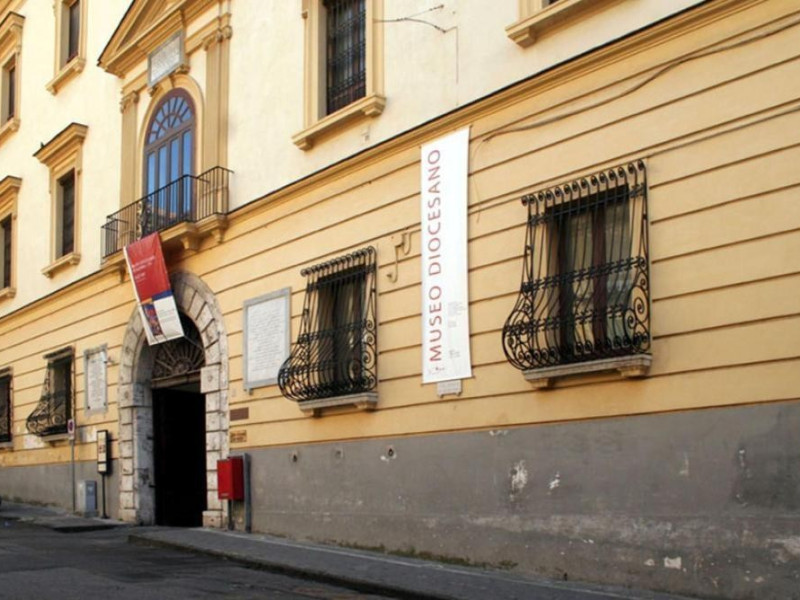Museo Diocesano
Founded in 1935 by Msgr. Arturo Capone, the S. Matthew Diocesan Museum, with the Archives and the Library of the Diocese, is housed, since 1990, in the Archdiocesan Seminary of Largo Plebiscito, near the Cathedral. Established Arc. Gaspare Cervantes after the Council of Trent for the formation of the clergy, the building was expanded and renovated over the centuries up to the current neo-classical style of the early decades of the nineteenth century. Once through the front door leads to an airy courtyard. Here, on the ground floor, are the storage and management, while the exhibition halls open on the first floor. The rich artistic heritage includes artifacts ranging from the Middle Ages to the twentieth century. Stand out the famous cycle ivory with scenes from the Old and New Testament (XII century), a frontal altar, according to the most reliable return, and the eleven sheets of parchment roll dell'Exultet (XIII century), illustrating the Easter Proclamation. The paintings, mostly of wood and canvas, dating from the thirteenth to the twentieth century, although the present centuries are the seventeenth and eighteenth centuries, with the collection from the Legacy of the Marquis Giovanni Ruggi of Aragon (1870). They offer an essay of coeval currents, most representative of the varied regional landscape with particular attention to Salerno Andrea Sabatini. The museum also boasts a large collection of coins, of which 923 from magnogreca age to the Norman times, already arranged in message boards, and a papal medal. Do not miss precious and miniated Codes (eleventh century, also Pontifical of XIII century), scrolls (13 Degrees of Medical College of Salerno), cinquecentine and seicentine. Enrich the collections sculptures (marble and wooden), plutei mosaic (XII century) from the bottom of the Cathedral Choir, works of gold, a lapidary and several archaeological finds of Roman and early medieval. Since 2006, the relics have increased with the collection donated by the late Director Msgr. Arturo Carucci and placed in two smaller side. In the Direction are temporarily quartered an archive and a library of about 4.000 titles consulted on request.




